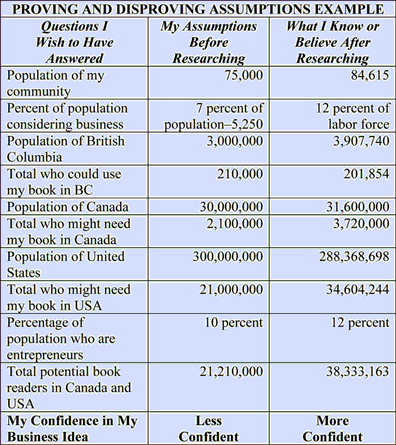Become a super sleuth and set out to prove or disprove all of your assumptions. This is the work of researching your market. Armed with your List of Assumptions, your List of Market Research Goals, and your Market Research Questions, it’s time to venture out and learn.
The key to this step is to keep an open mind. Persist in digging up all available information.
Example: Proving and Disproving Assumptions
I set out to prove or disprove my assumptions. One of the joys of market research is that it compels you to learn more about the world around you. I learned some interesting things along the way.
I get bogged down quickly at statistics sites; they tend to frustrate me and I’m not overly patient when searching. I want simple and understandable summary population tables, and I want them right now! On a number of occasions, I have emailed the contact links at the statistics websites requesting information. In most cases, I’ve received prompt and helpful responses to my queries.
It was after one such desperate plea that I was able to complete the following table. The important thing is not that my initial assumptions are accurate. My increased confidence arises from the fact that my assumptions and knowledge base are becoming more accurate.
Keep sifting until you have separated the wheat from the chaff to harvest the purest information for your efforts.
Action
![]()
Create a word or excel file or table to store and manage this information. If you set up the folders suggested in Step 4, we recommend storing this file in the market research file.
- Research your market. Read trade journals and books, search on the Internet, review reports, ask questions, follow your hunches and turn over all the rocks.
- Challenge your assumptions until they are either proven or disproven. Record your findings and adjust your thinking when necessary.




